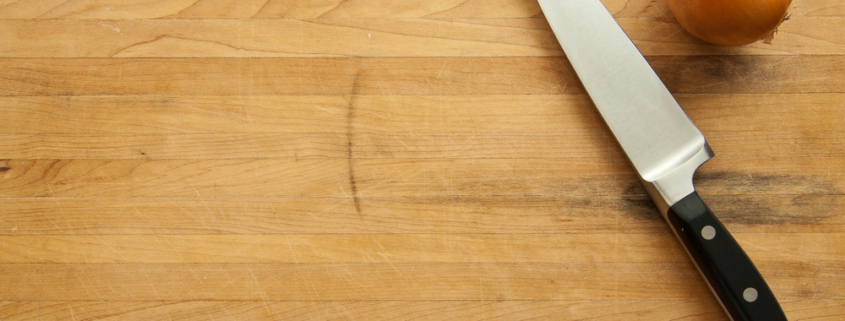Is butcher block the best kind of countertop?
Dear Mom and Dad: congratulations! You’ve built your new cottage and, with it, a new kitchen. A clean slate. Let’s not repeat the mistakes from the last one. That means more space and more storage. But also, I beg you, give up your love affair with laminate countertops. I know, I know. They’re familiar, cheap, and easy to lug across the lake and up our steep hill. But, picture this: butcher-block countertops. Hear me out.
Butcher block, unlike laminate, ages gracefully. Nicks, cuts, and even little burn marks only give it more character over time. And, as all cottagers know, real wood never goes out of style.
Joseph Barbercheck, the vice president of Michigan Maple Block, says your counters should be 1/2″ to 3″ thick. You can get butcher block in many wood types: walnut, eucalyptus, cherry, even teak. But he votes for maple. It’s the most affordable, and its light golden tone makes a kitchen feel bright and cheery.
Barbercheck says there are two options for your countertop: the kind you use as a giant cutting board and the kind you don’t. If you want to cut food on your surface, condition it with mineral oil once a day for a week, then once a week for a month, and, after that, once every month or two. This gives you the option of sanding down cut marks and re-oiling the counter to make it look new again.
Option two requires less maintenance: just wash it with lemon oil or a soapy cloth, and use a separate cutting board for food prep.
I would go for both: keep a small oiled section as the designated food-prep area (wood is naturally antimicrobial). Over time, it’ll have the same well-worn patina as the crib board. And years from now, when you’re gone, and I’m the one cooking in the kitchen, I’ll have a surface full of little signs of you, souvenirs from all the meals we shared in our cabin, once so new.
By Braden Alexander. Copyright Cottage Life


